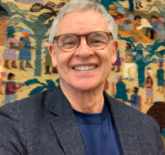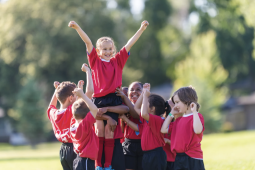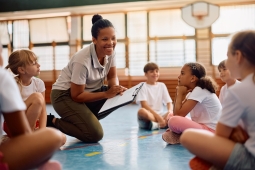Physical And Health Education Curriculum and Pedagogy
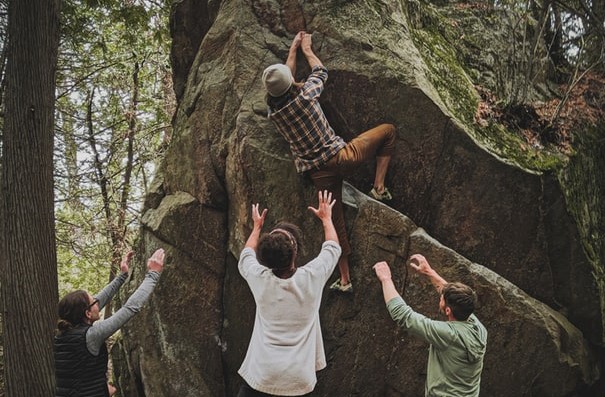
Previously published in Volume 87, Issue 3
Abstract
Physical and Health Education nurtures in young people an integrated sense of motivation, confidence, and understanding of how to navigate the world healthfully through experiential learning. To do that, we teach in modern ways for modern children in modern schools with modern expectations for modern educational outcomes. Early humans living considerably more hostile and unpredictable hunter-gatherer existences had at least as compelling a need for their children to learn the values and skills required for them to survive and to thrive. The hunter-gatherer approach to fostering the knowledge required for their children to master a complex physical and social environment holds possible reminders about pedagogical and curricular strategies relevant to modern PHE. In this paper, we explore a back-to-the-future approach to creating experiential learning environments in PHE based on the wisdom of hunter-gatherer cultures and their approach to fostering learning about healthy lives among their young people.
“I am entirely certain that twenty years from now we will look back at education as it is practiced in most schools today and wonder that we could have tolerated anything so primitive.”
- From “No Easy Victories” (1969)
John Gardner
American Secretary of Health, Education, and Welfare
Typically, the word “primitive” connotes ignorant, unsophisticated, or uncivilized. However, primitive can suggest more positive attributes like natural, unpretentious, and simple. It is relatively easy and expected to envision new educational uses for internet or electronic devices but we seldom if ever reframe the usefulness of a chalk board, quill pen, or slide rule. Each of the forward-thinking phases through which Physical and Health Education (PHE) has passed (e.g., Lawson, 2018) has taught us something about educating for healthy embodied life in a physically and socially complex world. However, as a profession or discipline moves forward, we believe there are opportunities to look to the past for good ideas that have been lost in the constant forward-looking and immediate desire for progress. In this paper, we draw on what is known about hunter-gatherer cultures and their ways of ensuring that young members of their groups learned the necessary values and skills of their society and examine the possible implications for PHE. Three strategies for promoting learning in PHE, each drawn from the ways in which those in hunter-gatherer bands learned the values and skills they needed to survive, are presented. These are:
- The importance of an exploratory, self-directed learning environment
- The expanded experience of a diverse learner group
- The redefined role of the teacher
Hunter-Gatherer Life And Learning
For 2,000,000 years our early ancestors lived day by day in small hunter-gather bands who made a subsistence living. Prior to the advent of agriculture and animal domestication 10,000 years ago, they scavenged high primary productivity landscapes for accessible plants, fruits, eggs, nuts, and meat obtained from carcasses of dead animals and later augmented this by persistence hunting of live animals using endurance pursuit and simple projectile weapons like slings or spears (Schrire, 2009). Their survival was never guaranteed and depended on motor, perceptual, cognitive, and social abilities intricately related to the environment in which they lived.
It would be wrong to assume that the learning required by children in hunter-gatherer bands was minimal. Their way of life was “knowledge-intensive and skill-intensive and . . . each child had to acquire the whole culture” (Gray, 2011, p. 30). Learning in a hunter-gatherer existence was demanding, complex, and literally a matter of health, life, and death. Geary (2005, 2007) provided a framework for understanding learning in hunter-gatherer culture that is relevant in an evolutionary way to PHE. He proposed that we retain our ancestors’ predisposition to learn how to “modify . . . and control ecologies and to cope with rapidly changing social dynamics”. Our hominid heritage predisposes us to acquire what Geary refers to as folk psychology, biology, and physics. These underpin our: evaluation of objects for use as task-specific tools (e.g., objects that can be used to create shelter, gather useful objects, prepare food, or being safe); formation of representations of the physical features of the environment for the purpose of navigating through it; and, other humans’ thoughts and emotional states. This suggests that the activities we create to promote learning in PHE will flow more effectively when built mindfully to reflect how we have long used our “folk knowledge” to interact safely and healthily with embodied life.

The Teaching Games for Understanding (TGfU) movement was animated by the concern that children did not understand the games they were playing or their learning activities in terms of their purpose. Almond (2010) and Stoltz & Pill (2013) summarized the TGfU principles that redefined how games, and by extension learning activities, could be presented to learners in this way:
- Present games to new learners in the simplest possible way
- Shape games over time to support progress in learning
- Emphasize the “sense” of the game in the experience of playing
- Have those teaching games redefine and implement a learner-centred engagement
Mandigo and Corlett (2010) noted that “games provide an ideal and safe setting not only to foster an understanding of the importance of key life skills, but also to provide learners with an opportunity to actively engage in activities that help them practice and gain life skills” (p. 80). This has resonance with the way in which hunter-gatherer groups approached the learning of their youngest members and forms a bridge between current PHE and the link we build here to the possible lessons we can take from hunter-gatherer culture to ladder from the TGfU approach.
Exploratory Self-Directed Learning Environments
The lives of children in hunter-gatherer societies, despite the demands of sustaining subsistence life, were quite liberated. This derived from a “fiercely egalitarian” social structure in small bands (Lee,1988). The absence of a hierarchical authority structure in such bands necessitated a consensual approach to decision making, resulting in a remarkable degree of personal autonomy that also extended to children. For example, Guemple (1988) observed that among Inuit in Canada’s north, a child, even when exploring an object or a location that brings possible danger, does so with minimal or no interference from adults. And, Gosso, Otta, Morais, Ribeiro, & Bussab, (2005) reported that among forager groups in Brazil, little overt direction is given to children with respect to when, where, how, and with whom their time must be spent. Children have considerable independence from adults and a large scope of self-determination with respect to what they do and how they do it starting very early in life.
This independence in childhood is, as Thomas (2006) aptly described it among hunter-gatherers in the Kalahari of Southern Africa, part of “the old way” in which hunter-gatherer children were not assumed to be in need of either precise learning protocols to follow, constant supervision, or highly constrained boundaries. The world today in which most children live is certainly a very different place than the ancient savannah and an unthinking advocacy for the kind of childhood autonomy among hunter-gatherers would be ill-advised. However, we might remind ourselves that the environments of hunter-gatherers had highly adapted predators and extremely unsafe places to be. If all the hunter-gatherer children had been taken away by those predators or dangerous situations at an early age because of the failure of adults to manage childhood, we would not be here today. As Sandseter (2009) has stated: “an exaggerated focus on children’s safety can be problematic because the quest to avoid childhood injuries will constrain the abilities for challenges and varied stimulation that children need to develop normally both physically and mentally”.
One feature of physical activity environments as learning spaces (e.g., games) is that they can recreate the small social and physical dynamic of the hunter-gatherer group. A PHE class is typically small and flexible enough to be conceived as that consensual, egalitarian, and non-hierarchical structure of the hunter-gatherer band. Anderson, Mandigo, and Gleddie (2018) noted in their advocacy for health-promoting schools that a school can be aligned systematically and purposefully to be an integrated learning environment. It can do so by being holistic, multi-layered, multi-sectored, and multidisciplinary. In the case of PHE, a school in its entirety could make the commitment, at least for parts of days, to provide exploratory opportunities that foster in a holistic way the development of the diverse learning outcomes about health. It could include all of the possible purposes to which active, collaborative activity can be applied (e.g., changing classes, caring for the school’s physical environment). This could, and should, include the outdoor environment of the school consistent with a pedagogy of outdoor play and the need for children to experience nature (e.g., Wattchow and Brown, 2011). It could involve everyone in the school in an inclusive and egalitarian way reminiscent of hunter-gatherer culture, including the administrative leaders, teachers, staff, and parents. And, it could provide multi-subject learning opportunities that promote PHE’s learning goals while allowing expanded pedagogy in other subjects taught in the curriculum.
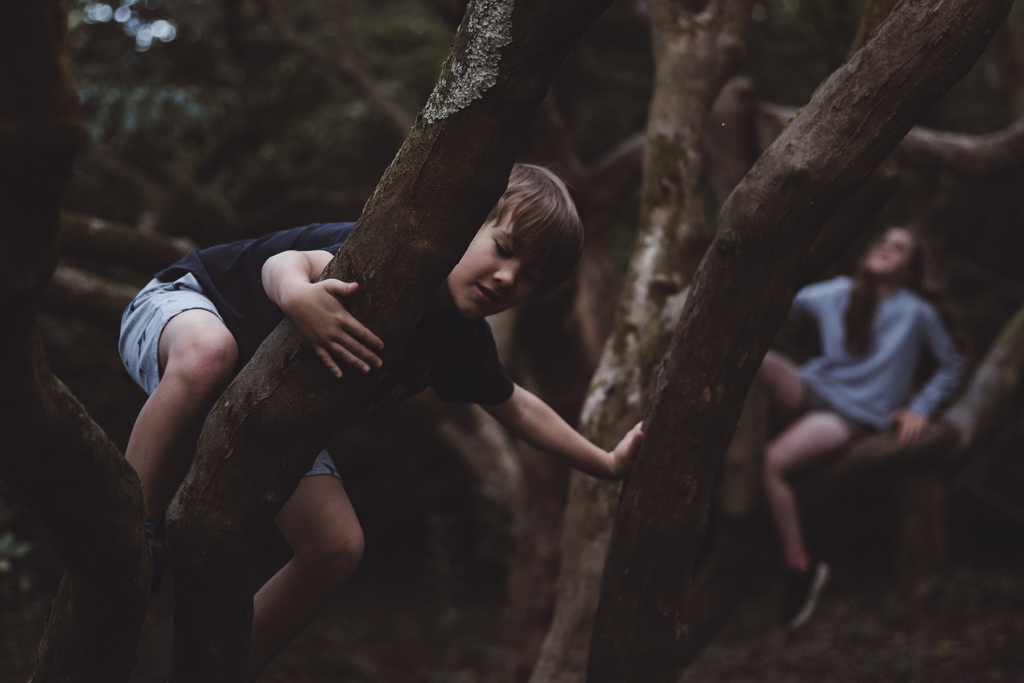
Diversifying The Learner Group
Hunter-gatherer children of all ages played with one another, sometimes in remarkably complex ways. Turnbull (1983), for example, reported how Mbuti children in central Africa constructed a completely separate version of the band’s village close by and used it as the site of play behaviours that mimicked the adult versions of activities in the actual village. However, the measure of progress of learning in modern schools is tightly yoked to age. Piaget (1936) identified cognitive development stages through which children pass as learners. However, Piaget did not claim that there was a precise link between age and cognitive development. Discrete progression through the educational system of one grade per chronological year is administrative convenience at least as much as developmental sense.
Age as a grouping factor in the educational system ensures that children of different ages do not typically mix in their educational experiences. This precludes advantages of age mixing in educational settings that was inherent in hunter-gatherer environments. For example, the inability of two young children to catch and throw well, or at all, means that playing catch isn’t possible for them. But, an older child who can both throw and catch can engage a younger child in a version of a game of catch. This is a scaffolding strategy in which a more experienced person fills the gap “between the actual developmental level . . . and the level of potential development . . . under adult guidance, or in collaboration with more capable peers" (Vygotsky, 1978, p. 86).
The concept of cooperative learning (e.g., Casey & Goodyear, 2015) highlights the idea of scaffolding in the PHE context. Age mixing in a learning environment allows the nurturing skills of older children to develop as they become teachers of younger ones while allowing those younger ones to learn more basic skills more effectively. And, while younger children may not be sufficiently attuned to adult life in a way that allows them to emulate their elders, they can model the activities of other older children not so far removed from their own development stage. The PHE learning experience is one in which the different ways that children of different ages think about the world might create better learning opportunities for all if they were allowed to mix and thrive together.
Rethinking The Teacher’s Role
The study of hunter-gatherers in the Kalahari has identified the centrality of children learning through freely chosen activities reflecting a belief that “children teach themselves” (Bakeman, Adamson, Konner, and Barr, 1990). The nature of this undirected social learning environment of hunter-gatherers has been described through detailed meta-ethnographic review (Lew-Levy, Reckin, Lavi, Cristobal-Azkarate, and Ellis-Davies, 2017). Unlike mathematics or language or science, PHE is not a traditional subject. It is a multidisciplinary, embodied way of knowing, and, at its best, it is intended to be imbued with personal values and life skills in ways that other subjects cannot be. In hunter-gatherer groups, just as the social structure was fluid and egalitarian, the learning framework in which a member of the band developed the values and skills necessary for individual and group survival was one based on daily life providing the opportunities to learn through experience.
The wisdom of elders was valued and sought as children learned. However, the primary role of adults was not to direct and to control, but to model the values and skills needed and include them as part of the daily routine rather than creating them as a separate intentional educational experience. Marini (2000) likened the best role of the modern teacher to that of Sherpa guides during a Himalayan mountain expedition. They do not carry the climbing team’s equipment: they are not porters or bearers. And they certainly do not carry the climbers to the summit! Rather, they are people who have lived the climbing experience before, know the mountain intimately, and can offer advice and support as well as challenge decisions being made by the climbers. Adults in hunter-gatherer bands were very much in this role, partners in a learning expedition that children themselves largely defined and created.
A PHE teacher could play the role of the elders in a hunter-gatherer band: ever-accessible, knowledgeable, experienced, and supportive models of the skills and values we would like children to learn. In addition, they would be responsible for transforming the school into the “modern savannah” into which children enter to explore and to learn. Boyette and Hewlett (2018) stated that our earliest forms of teaching limited the degree of adult intervention, encouraged autonomous learning by young people, and was typically subtle and indirect and specific to a particular task being experienced at the moment. This provides a useful starting point for an examination of the role of the PHE teacher in our modern world.
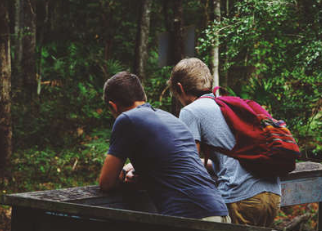
The Expanded Role of Physical and Health Education in a School
Imagine a “health championing school” (Anderson, Mandigo, & Gleddie, 2018). In such a learning environment, at least some time each day would be arranged so that the entire school itself was opened to exploratory possibilities loosely structured around the needs of healthy young people. Teachers would provide physically, mentally, and socially challenging activities with health values and skills at their foundation with simple goals of “what” but few instructions about “how”. Teachers, and older children, would have the responsibility to create health-themed challenges and tasks and to provide the basics upon which self-exploration will be meaningful. Further to that, teachers would have the responsibility during the activity, to be available, to show interest, and be able to provide expert support when asked. They would also engage students in reflection afterwards to make more tangible what was done and why, and what was learned that can be taken away.
There is no better way to conclude our analysis than by acknowledging the deep roots that underlie our thinking. John Dewey wrote, "I believe that the school must represent present life-life as real and vital to the child as that which he carries on in the home, in the neighborhood, or on the playground." (Dewey, 1897). Dewey’s advocacy for learning by doing, for the experiencing of life in a hands-on way as the path to knowledge, was very much an articulation of learning among hunter-gatherers. If we are to be committed to educating for confidence, competence, motivation, and understanding pertaining to healthy embodied life, we believe there is a case to be made for looking back for inspiration in our approach to physical and health education. Our oldest ancestors were our earliest learners and they can still teach us a thing or two.
References
Almond, L. (2010). Forward: Revisiting the TGfU brand. In: Butler, J, Griffin, L (Eds.) More Teaching Games for Understanding: Moving Globally (vii-x). Champaign, IL: Human Kinetics.
Anderson, A., Mandigo, J., & Gleddie, D. (2018). Healthy schools, healthy futures: Make your school a health-promoting community. Toronto: Thompson Educational Publishing Ltd.
Bakeman, R., Adamson, L. B., Konner, M. and Barr, R. G. (1990). !Kung Infancy: The Social Context of Object Exploration. Child Development 61:794–809.
Boyette, A.H. & Hewlett, B.S. (2018). Teaching in hunter-gatherers. Review of Philosophy and Psychology, 9(4):771-797.
Casey, Ashley, and Victoria A. Goodyear. 2015. “Can Cooperative Learning Achieve the Four Learning Outcomes of Physical and health education? A Review of Literature.” Quest 67: 56–72.
Dewey, J. (1897). My pedagogic creed (No. 25). EL Kellogg & Company.
Gardner, J.W. 1969. No easy victories. New York: Harper Collins Publishers.
Geary, D.C. (2005). The origin of mind: evolution of brain, cognition, and general intelligence. Washington, DC: American Psychological Association.
Geary, D.C. 2007. Educating the evolved mind: Conceptual foundations for an evolutionary psychology. In J.S. Carlson & J.R. Levin (Eds.), Educating the evolved mind: Conceptual foundations for an evolutionary psychology (1-99). Greenwich, CT: Information Age.
Gosso, Y. , Otta, E. , Morais, M.L.S. , Ribeiro, F.J.L. , & Bussab, V.S.R. (2005). Play in hunter-gatherer society. In A. D. Pellegrini & P. K. Smith (Eds.), The nature of play (213-253). New York: Guilford.
Gray, P. (2001). The evolutionary biology of education: How our hunter-gatherer educative instincts could for the basis for education today. Evolution: Education & Outreach 4:28-40.
Guemple, L. 1988. Teaching social relations to Inuit children. In Ingold, T., Riches, D., & Woodburn, J. (Eds.), Hunters and Gatherers 2: Property, Power, and Ideology (131–149). Oxford: Berg Publishers.
Lawson, H.A (Ed.) (2018). Redesigning Physical and health education: An Equity Agenda in Which Every Child Matters. New York, NY: Routledge Publishers.
Lee, R.B. 1988. Reflections of primitive communism. In: Ingold, T., Riches, D., & Woodburn, J. (Eds.), Hunters and gatherers 1 (252-268). Oxford: Berg Publishers.
Lew-Levy, S., Reckin, R., Lavi, N., Cristobal-Azkarate, J., & Ellis-Davies, K. 2017. How do hunter-gatherer children learn subsistence skills? Human Nature 28(4): 367-394.
Mandigo, J. & Corlett, J.T. (2010). Teaching games for an understanding of what? TGfU’s role in the development of physical literacy. In Butler, J.I. & Griffin, L.L. (Eds.), More Teaching Games For Understanding: Moving Globally (69-88). Champaign IL: Human Kinetics Press.
Marini, Z. (2000). The teacher as Sherpa guide. In Magna Publications Incorporated (Eds.), The Best of the Teaching Professor (26-27). Madison, WI: Magna Publications.
Piaget, J. (1936). Origins of intelligence in the child. London: Routledge & Kegan Paul.
Sandseter, E. B. H. (2009). Characteristics of risky play. Journal of Adventure Education and Outdoor Learning, 9(1), 3-21
Schrire, C. (2009). Past and present in hunter-gatherer studies. New York: Routledge.
Stoltz, S. & Pill, S. (2013). Teaching games and sport for understanding: Exploring and reconsidering its relevance in physical and health education. European Physical and health education Review, 20:1, 36-71.
Thomas, E.M. (2006). The old way: a story of the first people. New York, Farrar, Straus, and Giroux.
Turnbull, Colin M. (1983). The Mbuti Pygmies: Change and Adaptation. Fort Worth: Harcourt Brace.
Vygotsky, Lev Semionovitch. 1978. Mind in Society: The Development of Higher Psychological Processes. Translated and edited by Michael Cole, Vera John-Steiner, Sylvia Scribner, and Ellen Souberman. Cambridge, MA: Harvard University Press.
Wattchow, B. & Brown, B. (2011). A pedagogy of place: Outdoor education for a changing world. Victoria, Australia: Monash Publishing.

